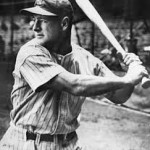Reviewed, in the usual not-even-trying-to-be-timely way:
Tuesdays With Morrie: An Old Man, A Young Man, and Life’s Greatest Lesson by Mitch Albom
Morrie Schwartz was good medicine, and he still is.
I was late hearing the news about the killing spree at the University of California at Santa Barbara, blessed in part by our cultural distance in China, to some degree by immersion in another project, and otherwise by finishing my re-read, on a recent Tuesday, of Mitch Albom’s 1997 publishing phenomenon. There aren’t many better prophylactics against the infections of toxic dismay, rampant disillusion and untargeted anger than this slender, absorbing memoir.
I’d been pretty quick, for a chronically tardy retro-reader, in getting to Tuesdays With Morrie the first time around. I was a high school teacher and basketball coach back then, and even best-sellerdom couldn’t discourage me from picking up a book with a subtitle like that.

